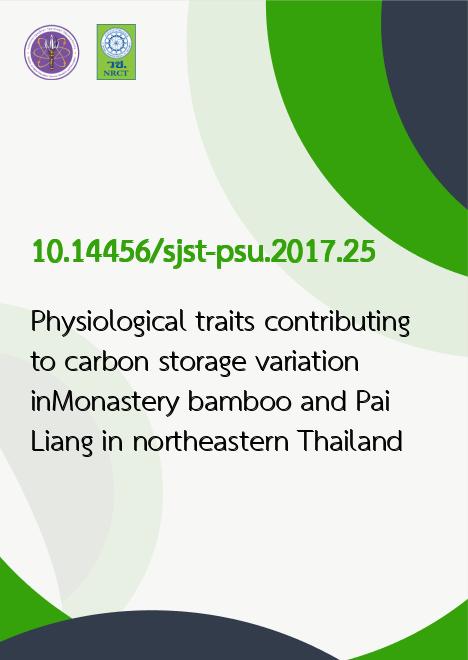
|
Physiological traits contributing to carbon storage variation inMonastery bamboo and Pai Liang in northeastern Thailand |
|---|---|
| รหัสดีโอไอ | |
| Creator | Nisa Leksungnoen |
| Title | Physiological traits contributing to carbon storage variation inMonastery bamboo and Pai Liang in northeastern Thailand |
| Publisher | Research and Development Office, Prince of Songkla University |
| Publication Year | 2560 |
| Journal Title | Songklanakarin Journal of Science and Technology (SJST) |
| Journal Vol. | 39 |
| Journal No. | 2 |
| Page no. | 215 |
| Keyword | Monastery bamboo,Pai Liang,leaf-to-air vapor pressure deficit,water use efficiency,carbon storage |
| ISSN | 0125-3395 |
| Abstract | This study aims at comparing the carbon storage ability of Monastery bamboo (Thyrsostachys siamensis Gamble) andPai Liang (Dendrocalamus membranaceus ? Thyrsostachys siamensis) in terms of the different physiological responses tothe microclimate. The stomatal conductance, leaf-to-air vapor pressure deficit (LAVPD), chlorophyll content, and water useefficiency (WUE) were measured. Pai Liang had a greater dry biomass per culm than Monastery bamboo, resulting in morecarbon storage. Monastery bamboo kept opening its stomata even when LAVPD increased, resulting in the loss of more waterand a lower WUE leading to a lower rate of growth and carbon storage. Pai Liang contained higher amount of carbon andnitrogen in the leaf tissue, indicating a better WUE. With regards to the climate change, Pai Liang is recommended owing to agreater carbon fixation and more rapid growth rate compared to the Monastery bamboo. |
